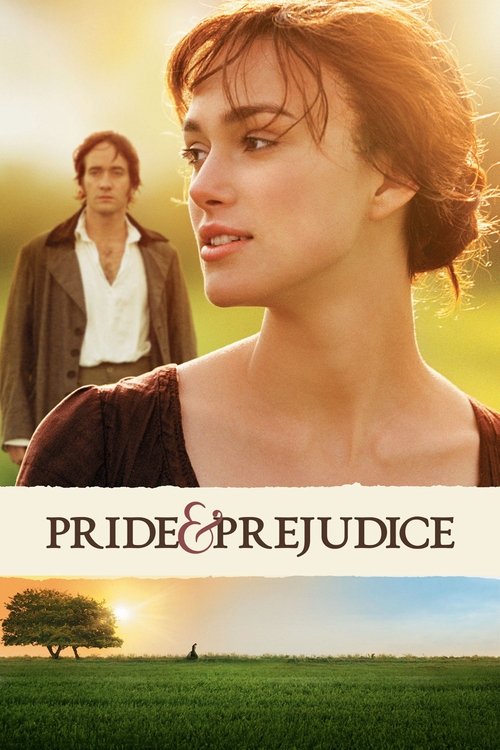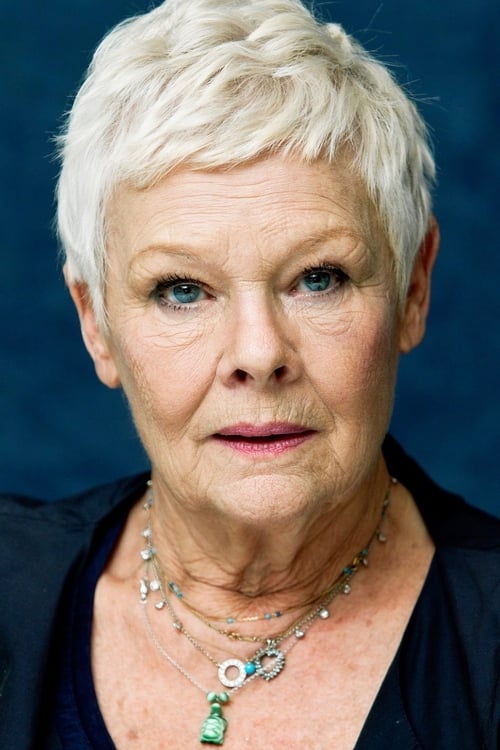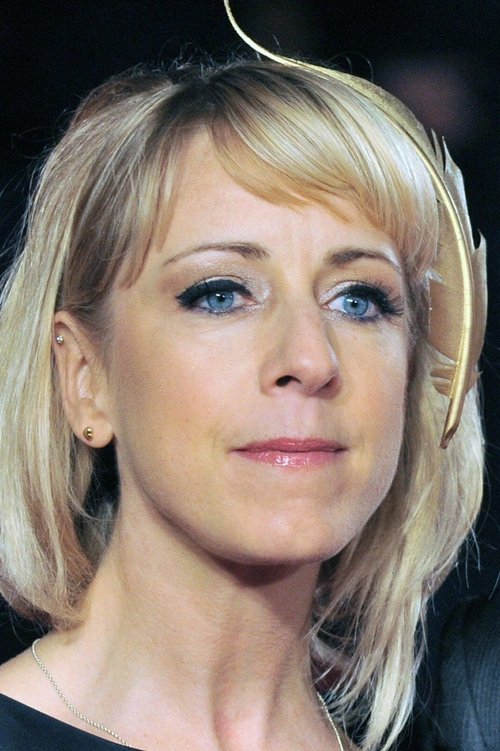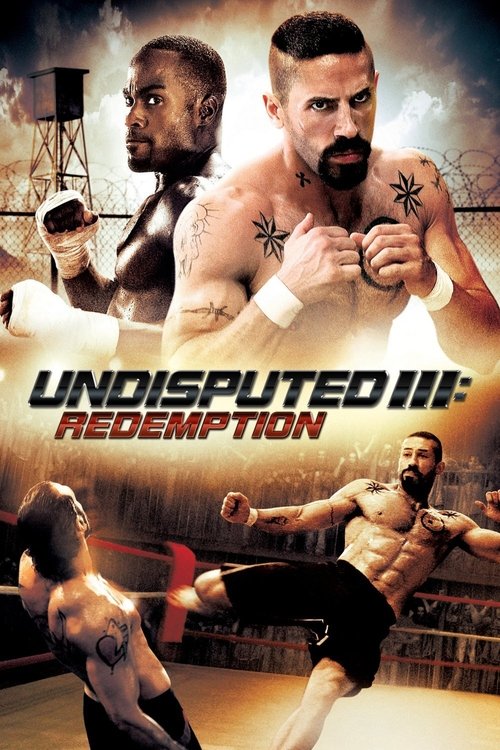
Pride & Prejudice
A story of love and life among the landed English gentry during the Georgian era. Mr. Bennet is a gentleman living in Hertfordshire with his overbearing wife and five daughters, but if he dies their house will be inherited by a distant cousin whom they have never met, so the family's future happiness and security is dependent on the daughters making good marriages.
Dialogues from Movie Pride & Prejudice
Quotes from Movie Pride & Prejudice
Sound Tracks from Pride & Prejudice by Dario Marianelli
Dawn
Dawn by Dario Marianelli, Opening scene of the film
The Living Sculptures of Pemberley
The Living Sculptures of Pemberley by Dario Marianelli, Elizabeth and Darcy's visit to Pemberley
Your Hands Are Cold
Your Hands Are Cold by Dario Marianelli, The proposal scene between Elizabeth and Mr. Darcy
I Can’t Let You Throw Yourself Away
I Can’t Let You Throw Yourself Away by Dario Marianelli, Final scenes as the story wraps up
Download App
Memorable Scenes from Movie Pride & Prejudice
The First Ball
At the Meryton ball, Elizabeth Bennet meets Mr. Darcy. Initially, she overhears him refusing to dance with her, calling her 'tolerable, but not captivating.' This moment sets the tone for their relationship, showcasing Darcy's arrogance and Elizabeth's quick-witted nature. The awkwardness defines their first impressions, escalating the tension between them. After the ball, the characters reflect on their feelings that begin to complicate their lives.
Context: This scene introduces key characters and establishes the social dynamics and prejudices of the time, highlighting Elizabeth's independence and Darcy's social status.
Elizabeth's Refusal
Mr. Collins proposes to Elizabeth, expressing his necessity to marry. In a tense and uncomfortable moment, Elizabeth firmly refuses, standing her ground against societal pressure. Her rejection shows her strong will and desire for true love, rather than a convenient match. Mr. Collins is stunned, and the scene becomes a powerful statement about women's choices and independence in a patriarchal society.
Context: This proposal scene raises stakes for Elizabeth, as it highlights the expectations placed on her as a woman to marry for security, contrasting with her desire for authenticity in relationships.
Pride and Prejudice
In a quiet evening at the Bennet home, Elizabeth reads Darcy's letter explaining his actions towards Wickham and his feelings for her. This moment of realization hits Elizabeth hard as she grapples with her misconceptions of Darcy. The visual of her reading, paired with the emotional score, captures her internal struggle as she begins to see Darcy in a new light. Her contemplation reflects profound self-discovery and growth.
Context: This letter serves as the pivotal moment that challenges Elizabeth's biases and biases, pushing her to reconsider her judgments and feelings, marking an important turning point in her character arc.
The Confession
In a dramatic confrontation at Pemberley, Darcy declares his love for Elizabeth, confessing how his feelings have changed. His vulnerability is stark against his previously proud demeanor. The rawness of this confession is represented visually through a close-up of Elizabeth's shocked yet softening expression. This moment shifts their relationship from animosity to hope, beautifully combining intense emotions with powerful storytelling.
Context: This confession not only highlights the development of Darcy’s character but also signifies Elizabeth's own changing feelings, emphasizing the transformation both characters undergo.
Bingley’s Departure
When Mr. Bingley leaves for London, broken-hearted Jane is left behind. The scene is filled with tension as the family discusses the decision and its implications. Jane's silent heartbreak, paired with Elizabeth's helplessness, creates an emotional climax. The visuals of Jane alone in her room convey the weight of lost love, deeply affecting viewers as they bond with her pain.
Context: This departure introduces conflict and misunderstanding, driving a wedge between characters and setting the narrative for the central theme of love faced with societal obstacles.
The Wedding Proposal
In a pivotal moment, Darcy asks Elizabeth to marry him for the second time, but this time, it’s different. He's humbled and vulnerable, and Elizabeth, moved by his sincerity and growth, responds passionately. This dialogue speaks volumes about love overcoming pride and prejudice. The scene is charged with emotion as both characters stand at a crossroads, ready to embrace a shared future.
Context: This direct proposal contrasts with their earlier encounters, signifying growth in their relationship and the possibility of understanding beyond social barriers.
Mr. Wickham’s Revelations
Wickham tells Elizabeth his version of events concerning Darcy, painting himself in a sympathetic light. The charm and deceit in his words create a dramatic tension as Elizabeth, swayed by his charisma, begins to judge Darcy unfairly. This moment is pivotal as it sows the seeds of misunderstanding that resonate throughout the film.
Context: This revelation shapes Elizabeth’s perception of both men, shedding light on the themes of deception and the importance of truth in relationships.
The Final Resolution
At the end, Elizabeth and Darcy walk together at Pemberley, reconciled and deeply in love. Their ease with one another and the beautiful scenery reflects their emotional growth. The dialogue exchanged is filled with warmth and understanding, leaving viewers with a sense of hope and closure, embodying the film's romantic and uplifting themes.
Context: This resolution ties together the character arcs, showcasing the transformative power of love and mutual understanding in overcoming prejudices.
Jane’s Heartbreak
Jane’s quiet despair over Bingley’s departure is beautifully captured. The camera lingers on her tear-streaked face as she stands by the window, creating a moment of pure vulnerability. This scene highlights the emotional stakes for Jane and the depth of her character, making viewers feel her sorrow and longing.
Context: Jane's heartbreak reinforces the themes of love and the heart's fragility in the face of societal expectations, enhancing the emotional richness of the story.
Lady Catherine's Confrontation
Lady Catherine visits Elizabeth to confront her about Darcy's affections, emphasizing class differences and social status. The tension escalates as Elizabeth stands her ground, refusing to be intimidated. The visual contrast of their surroundings emphasizes the class divide. This moment embodies the struggle against societal norms and the strength of Elizabeth's character.
Context: This confrontation is essential for Elizabeth’s character development, showcasing her independence and refusal to adhere to social expectations regarding marriage and class.
The Letter
Darcy’s letter serves as a narrative tool that transforms Elizabeth's perception of him. As she reads, Elizabeth’s face moves from disbelief to understanding. This pivotal moment marks her character’s growth, as she reevaluates her views on pride and prejudice, deepening audience engagement. The poignant music and expressive cinematography amplify this emotional journey.
Context: The letter is significant in revealing truths that connect the characters and show how misunderstandings can lead to prejudice, aligning with the film's central themes.
The Proposal on the Hill
In the rain, Darcy proposes to Elizabeth on the hill, filled with raw emotional intensity. The downpour reflects the turmoil of their feelings. Elizabeth, filled with confusion and anger, confronts Darcy about his past actions. This moment brings all the tension between them to a head, ultimately leading to a deeper understanding of each other’s motivations.
Context: The rain symbolizes both heartache and emotional release, and this scene encapsulates the struggles of love vs. societal expectations, making it a standout moment.
The Dance
At the Netherfield ball, Elizabeth and Darcy's dance speaks volumes without words. The tension between them is palpable as they dance, surrounded by watching eyes. Their body language and exchanged glances reveal their complex feelings, both drawn to and repelled by each other. This moment is both romantic and filled with unspoken conflict.
Context: This dance serves as a metaphor for their relationship, illustrating the push and pull of attraction and repulsion, essential to the film's exploration of love's intricacies.
The Ruined Proposal
Darcy makes his ill-fated first proposal to Elizabeth in a heated exchange that highlights the class barrier between them. Elizabeth’s emotional rejection and fury unveil layers of her character. The rawness of the scene portrays love intertwined with pride and social expectations, making the moment unforgettable and impactful.
Context: This proposal is crucial as it encapsulates the societal pressures faced by both characters and ignites the pivotal conflict that defines their relationship.
The Arrival at Pemberley
As Elizabeth and her relatives tour Pemberley, the grandeur reflects Darcy’s wealth and status. However, her growing emotions conflict as she begins to see him differently. The picturesque landscape creates a romantic tone, furthering the story's development. This scene emphasizes how environment and social status impact one’s view of love.
Context: This moment foreshadows Elizabeth's internal conflicts regarding her feelings for Darcy and serves as a visual representation of the disparity between their social standings.
The Ruined Reputation
After Lydia runs away with Wickham, the tumult it brings to the Bennet family jars Elizabeth to her core. The shock of the news hits hard, showcasing the impact of one family member's actions on the whole. The family’s despair and scandal highlight women's lack of agency and the importance of reputation during their time.
Context: This moment thrusts the family into turmoil, raising stakes considerably and demonstrating societal expectations that frame the ever-present theme of pride and prejudice.
The Second Proposal
Darcy’s second proposal to Elizabeth is filled with hope and renewed determination. The vulnerability expressed in his words marks a significant emotional moment. Elizabeth reciprocates his feelings, her own walls coming down. This moment shifts both their characters from prideful to open-hearted, illustrating how love can conquer prejudice.
Context: This proposal serves as a culmination of their character arcs, representing the triumph of love over societal expectations.
The Family Gathering
In a scene that combines humor and tension, the Bennet family's dynamics are on full display during a meal with Mr. Collins. His pompous behavior is juxtaposed with the family's reactions, providing both levity and a critique of societal norms. This scene deepens the audience's understanding of the Bennet family’s struggles and the pressure they face.
Context: This gathering highlights societal expectations and the pressures placed on women to marry well, setting the stage for character motivations in the story.
The Aftermath of Lydia’s Elopement
After Lydia's flight with Wickham is revealed, Elizabeth witnesses the turmoil it brings to her family. The devastation on her mother's face and the fear in her father’s eyes encapsulate the gravity of the situation. This heart-wrenching moment emphasizes familial bonds and societal constraints, profoundly affecting the narrative.
Context: This scene deepens the audience's empathy for the Bennet family and serves as a pivotal moment that drives the resolution of the plot.
The Reunion
Finally, Elizabeth and Darcy’s reunion is charged with emotion. As they express their love for each other, the barriers that once stood between them dissolve. The scene is marked by a sense of relief and joy, intertwining their personal growth with the happiness they’ve found in each other. This moment signifies the culmination of their journey.
Context: This reunion ties together the characters’ arcs, highlighting the themes of love, understanding, and breaking societal norms to find genuine connections.
Elizabeth's Stand
During a tense confrontation with Lady Catherine where Elizabeth stands firm against her demands, this moment showcases Elizabeth's unyielding spirit. Her courage to defend her love for Darcy despite societal judgment speaks volumes about her character. This powerful moment resonates with themes of personal integrity and self-respect.
Context: This stand against Lady Catherine’s authority solidifies Elizabeth's independence and commitment to true love, marking a key turning point in the narrative.
The Garden Walk
As Elizabeth wanders through Pemberley’s gardens, her look of awe reflects her changing feelings towards Darcy. The lush landscape signifies newfound hope and possibility in their relationship as her internal growth blossoms visually. This scene captures the serenity and beauty of their evolving connection.
Context: The garden walk underscores the theme of transformation and the journey from misunderstanding to love, accentuating the emotional depth of the story.
Download App













